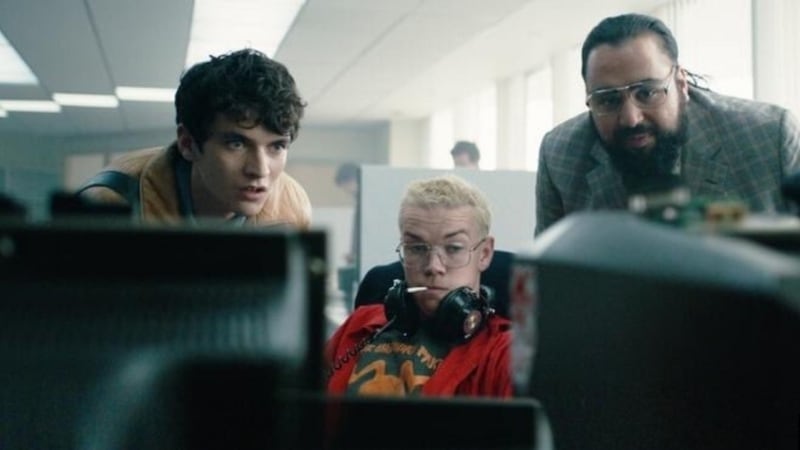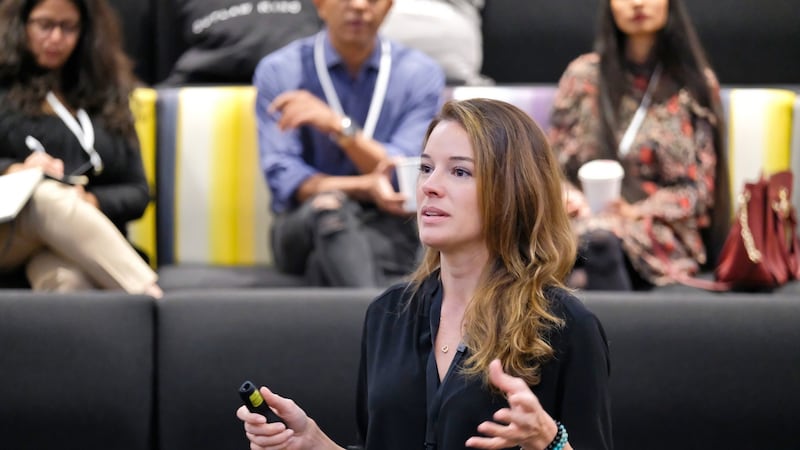If you'd forgotten that Netflix is, at its heart, still a technology company, then rest assured, you're not alone. The streaming service has become such a part of people's everyday lives that many of us no longer pay attention to how its content arrives.
The company itself has also increasingly sought to focus attention away from algorithms and towards its latest shows. With Netflix having seriously ramped up its budget for original content in recent years this isn’t too surprising.
Without much fanfare, however, the company is still investing heavily in technology and not just in areas that you might expect. Sure, it still ploughs significant sums into trying to make its user interface easy to navigate and ensuring users can stream content no matter how bad their internet connection. But it is the work Netflix is doing behind the scenes for content creators that is particularly interesting.

Take the bespoke software it created for Black Mirror’s Bandersnatch. The Charlie Brooker-helmed show, which debuted in late December, was the first adult interactive title to come from Netflix. It invited viewers to make decisions during the programme that would lead to different outcomes with as many as 12 alternative endings available.
A huge hit it might have been, but difficulties with writing such a non-linear script led Netflix to create a bespoke custom script-writing tool called Branch Manager to allow producers Brooker and Annabel Jones to keep abreast of all the different and expanding storylines.
The tool can be used to create complex narratives that branch out, presenting different options that diverge and in many cases intertwine at different points.
"Really it's a production tool that standardises our workflow," Dave Schlafman, design manager of interactive originals at Netflix, told journalists at a recent press briefing in Los Angeles.
The five-time Emmy-nominated producer and design expert said the software is now being used across all its interactive titles, which includes You vs Wild, a show in which viewers get to join survival expert Bear Grylls on his adventures and make key decisions about what he eats, encounters and experiences.
“It’s really amazing to see what this tool has enabled our creators to do,” added Shlafman.
Branch Manager not only allows creators to map out complex stories more easily, but they can also import content such as filmed footage into the package, allowing them to preview interactive content earlier on in the production process.
“We were able to experience Bandersnatch getting daily builds of it. It was so exciting to see that,” said Schlafman.
Writing a software programme to help deal with elaborate shows such as Bandersnatch is one thing, but another key area where Netflix is developing technology is in creating tools for use by production crews.

The company has a dedicated in-house team that, over the past few years, has been busy building a suite of products to aid those involved in the production process. This might not seem a particularly radical move at first glance, but as Netflix's studio technology director Amie Tornincasa succinctly puts it:
“In the world of content creation a lot of the operations have not been introduced to a lot of technology.”
As Tornincasa goes on to add, this created an issue for the team initially as it wanted to be able to assist content creators without getting in their way.
“Every time I go to a production set or office, there is this beautiful controlled chaos that is fascinating and we don’t want to disrupt the art of that but what we do want to do is collectively build solutions to remove the operational administrative overheads for a production crew.”
The solution is Prodicle (Production Chronicle), a suite of software tools that cover everything from the scheduling of a shoot, budgets and the management of crews.
Technology on set
Tornincasa points out that there are plenty of difficulties involved with introducing technology to sets, with the fact that most production crews are not very tech savvy being only one of them.
Most people work on a freelance basis, are extremely busy and don’t tend to either be based in one particular place or to necessarily always collaborate with the same people. Given this, the task for the in-house team in designing tech for use by crew was that their solutions be easy to use but also effective in helping them complete tasks more easily.
There are seven products available in Prodicle and the suite is now being localised in Japanese, Portuguese and Spanish. Last year, 40 productions made use of at least some of the apps and services developed by the in-house team, including well-known shows such as Glow.
Tornincasa stresses that the work of introducing tech to the production process is still in its earliest days.
“There is a lot of work to be done in the space and a lot of opportunities that we see,” she said, refusing to rule out the possibility that Netflix might make the software available to other companies at some point.
While these innovations may all be well and good for those working on productions, viewers may want to know what technological developments may be coming down the track for them. On this, Netflix had far less to say although chief executive Reed Hastings did hint that a more attractive layout might be on the way.
“Our user interface is too much... you know, three centimetre box shots everywhere... It’s a little bit too much like the classified ads and not enough like a magazine where it’s gloriously laid out. It’s something that we’re working on improving,” Hastings told journalists.
Many viewers may agree but speaking at the same press event, Netflix's vice-president of user experience, product and studio design Steve Johnson seemed to rule out any fundamental changes to the look and feel of the UI.
“What we’re finding is the way that the grid is set up is actually working relatively well around the world,” said Johnson.



















